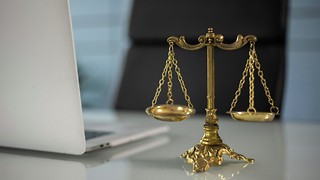Live Music: Alba Orchestra
Rob Hawkins finds the promise of an evening of music from the “top musicians in the University” lives up to the hype

It was with the palpable excitement of The Marriage of Figaro’s overture that the Alba orchestra was born onto the Cambridge music scene on Monday evening. With a programme well-chosen, both for its suitability to the players and its internal resonances, the two-hour concert showcased Patrick Milne as both conductor and soloist. The orchestra, founded this year by Milne, comprises ‘the very top musicians at the University’ – an ambitious claim, which turned out to be well-justified.
Conducting Figaro from memory (and seemingly very relaxed to be doing so), Milne set an opening tempo with great momentum, well-suiting the great wit and humour of the opening nervous rumblings in the bassoon. This was then coolly controlled throughout, with humorous exchanges spilling forth. Particularly notable was the dynamic contrast facilitated by the ensemble’s attention to Milne’s varied physicality. Countermelodies and rising lines sprang from a very resonant lower string section, while the regal trumpet overarching the closing bars completed the picture of a well-balanced ensemble.
The stage was re-set for Mozart’s Piano Concerto No.20 in D minor (from memory, again, and the piano un-lidded for maximum contact with players) which Milne conducted from the keyboard with equal panache. The swelling, foreboding opening exhibited more fine double bass resonance and sensitive timpani work. Complex syncopated figures and delicate rubato were all achieved, despite both hands being engaged on the keyboard. Indeed, an atmosphere of chamber music-making permeated the entire evening, with particularly impressive communication between the inner circle of string desks and the soloist, ensuring immaculate ensemble with great freedom for creativity and license, which felt at moments like a piano quintet. The dynamic control exhibited in Figaro was maintained, with Milne leaping from the stool for emphatic orchestral entries.
Gentler gradation suited the second movement, with the opening nursery-rhyme-like theme wittily handled by soloist and ensemble alike. The flitting, modulatory third movement exhibited hugely characterful playing from the wind sextet, and the virtuosic ebb and flow of the cadenza was met with forceful staccato chords and triumphant chorale-like shapes shared between wind and piano.
Beethoven’s Symphony No.7 challenged the orchestra to leave its chamber characterisation behind. Though delicate touches remained (some beautiful pizzicato ensemble in the cellos), broader strokes of the brush were called for, and the ensemble obliged, equipping the first movement with overflowing exhilaration. Fiendish melodic writing for the horns occasionally stretched the players, but they rose to the challenge admirably. The darkness of the famously funereal second movement mirrored some of the desolation of the concerto: both elegiac lines and fatalistic, plodding bass figures were memorable. The finale was the ‘headlong perpetual motion engine’ promised in the (incidentally very well-written) programme notes, and was delivered with huge charisma.
The decision to form a new ensemble in an already crowded orchestral community is a brave one, but it appears to have payed off: the richness of tone and delicacy of communication throughout the evening rivaled any music making at the university. The Alba Orchestra have an exciting road ahead of them.
 Features / Selling the Cambridge experience: private summer programmes in the historic university 3 August 2025
Features / Selling the Cambridge experience: private summer programmes in the historic university 3 August 2025 News / Two arrested after death of Cambridge language school student 4 August 2025
News / Two arrested after death of Cambridge language school student 4 August 2025 News / Newnham postgrads referred to homeless charities as College runs out of rooms31 July 2025
News / Newnham postgrads referred to homeless charities as College runs out of rooms31 July 2025 Comment / Are degrees still worth it?4 August 2025
Comment / Are degrees still worth it?4 August 2025 News / Cambridge Folk Festival to relaunch in 20265 August 2025
News / Cambridge Folk Festival to relaunch in 20265 August 2025









